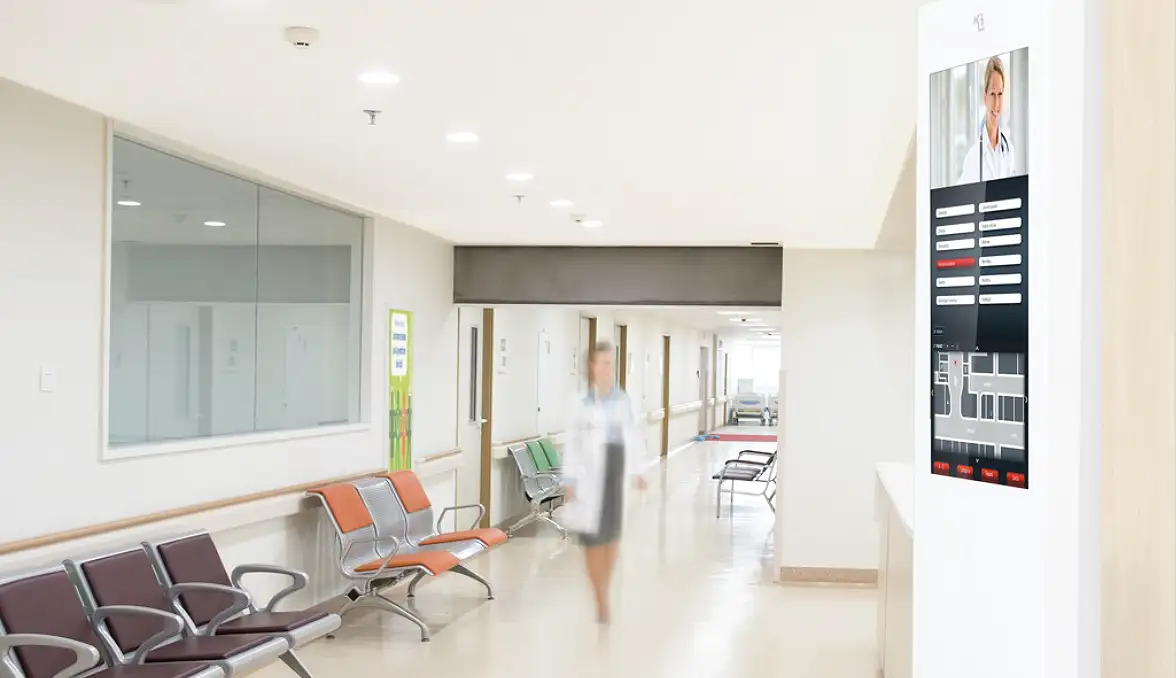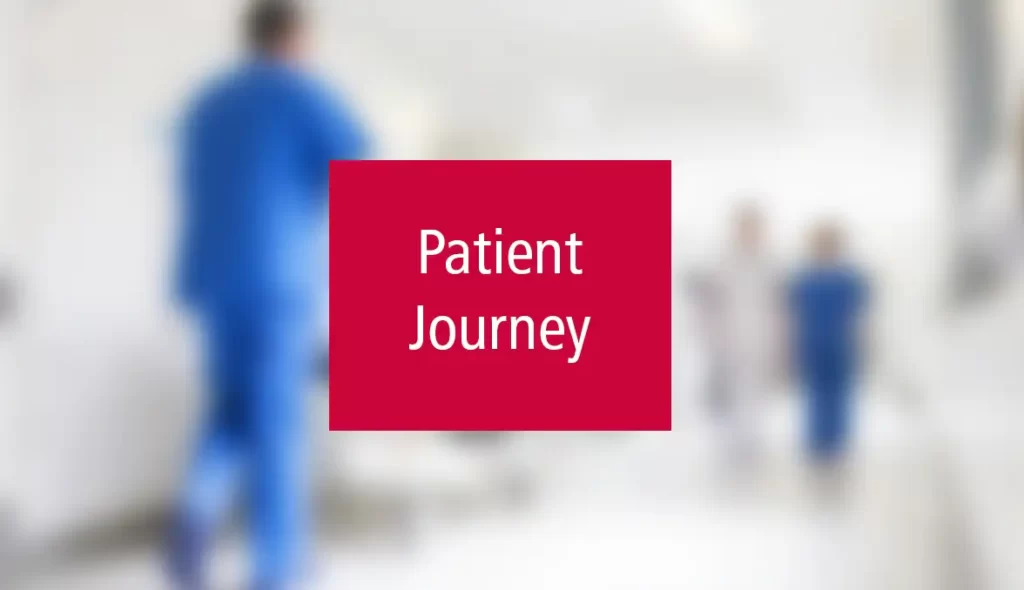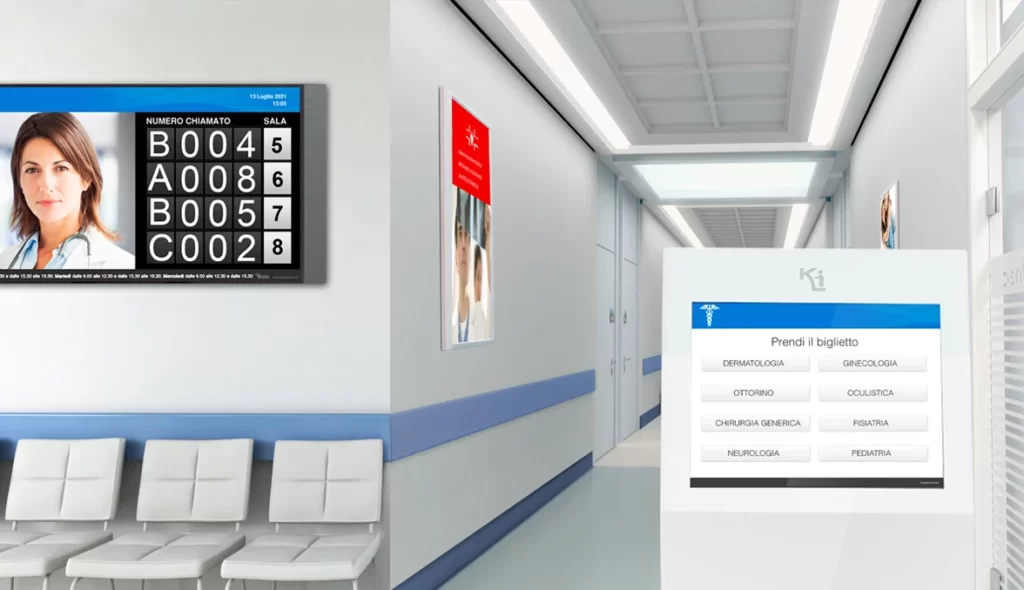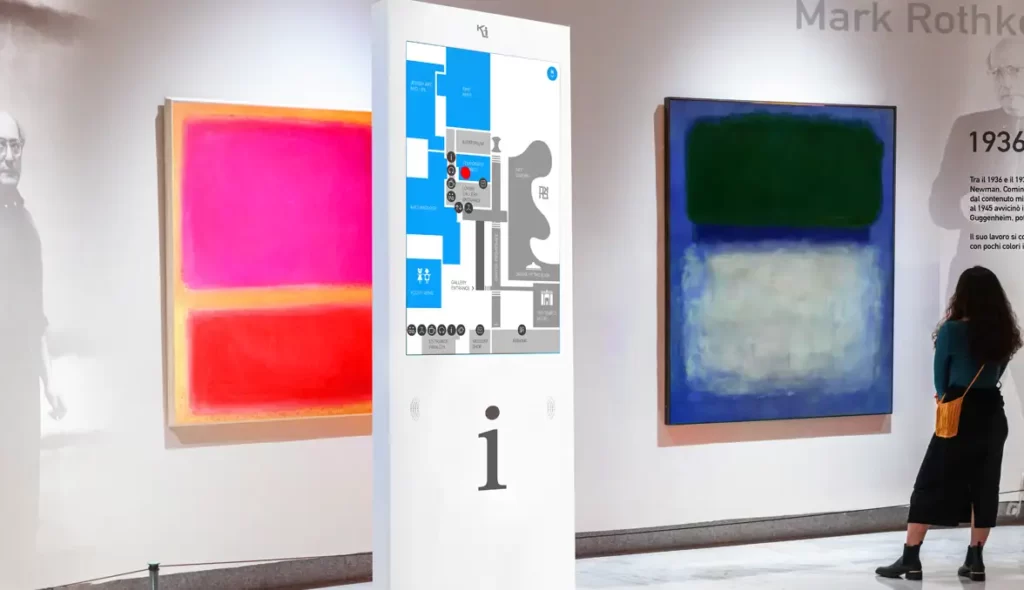For many people, entering a hospital can become a labyrinthine experience, a journey through endless corridors and signs that seem to point in opposite directions. Searching for a specific department can quickly turn into a nightmare of anxiety and confusion that affects the patient journey.
An inconvenience that often arises from uncertainty, sometimes from the lack of clear indications, from the awareness of the time wasted in trying to find the best path by relying on the indications received here and there from hospital staff and other people in the same situation.
If we analyze the patient journey, there are certainly three typical situations that negatively influence the overall experience.
Patient anxiety
Immersed in a sea of corridors, patients often experience a growing sense of anxiety. The need to ask strangers for directions, often in a hurry, further contributes to a tense atmosphere.
Finding a department becomes not only a physical search but also an emotional undertaking, increasing the stress level among those seeking medical care.
Confusion and waste of time
The lack of clear directions not only generates anxiety, but also leads to a significant waste of time. Patients and visitors find themselves wandering aimlessly, disrupting the natural flow of hospital operations.
Confusion slows the process and can lead to delays in doctor visits or receiving needed care.
The cost of disorientation
The inconvenience caused by difficult navigation in traditional hospitals has a tangible cost. In addition to wasted time, disruptions accumulate for hospital staff, who must repeatedly respond to requests for information.
This not only slows down service but can also impact the overall quality of care provided.
The search for a department thus turns into a path full of obstacles, where discomfort and confusion become additional complications in the already complex experience of medical care.
These aspects lead us to reflect on the meaning of adequate hospital signage or rather, on its digital evolution: Wayfinding.
What does Wayfinding mean?
The concept of wayfinding represents the modern evolution of orientation in complex spaces such as hospitals, shopping centers and campuses. No longer limited to traditional signage, wayfinding aims to offer a more advanced and future-oriented navigation experience.
The term “wayfinding” goes beyond simply indicating direction; it’s about creating an intelligent, interactive system that guides people through complex environments clearly and efficiently.
In a context where immediacy has considerable importance, traditional hospital signage is often not enough.
People require a dynamic approach, capable of adapting to inevitable changes in hospital spaces and providing real-time guidance.
Digital wayfinding represents the innovative answer to a growing need for more intelligent and user-centered orientation.
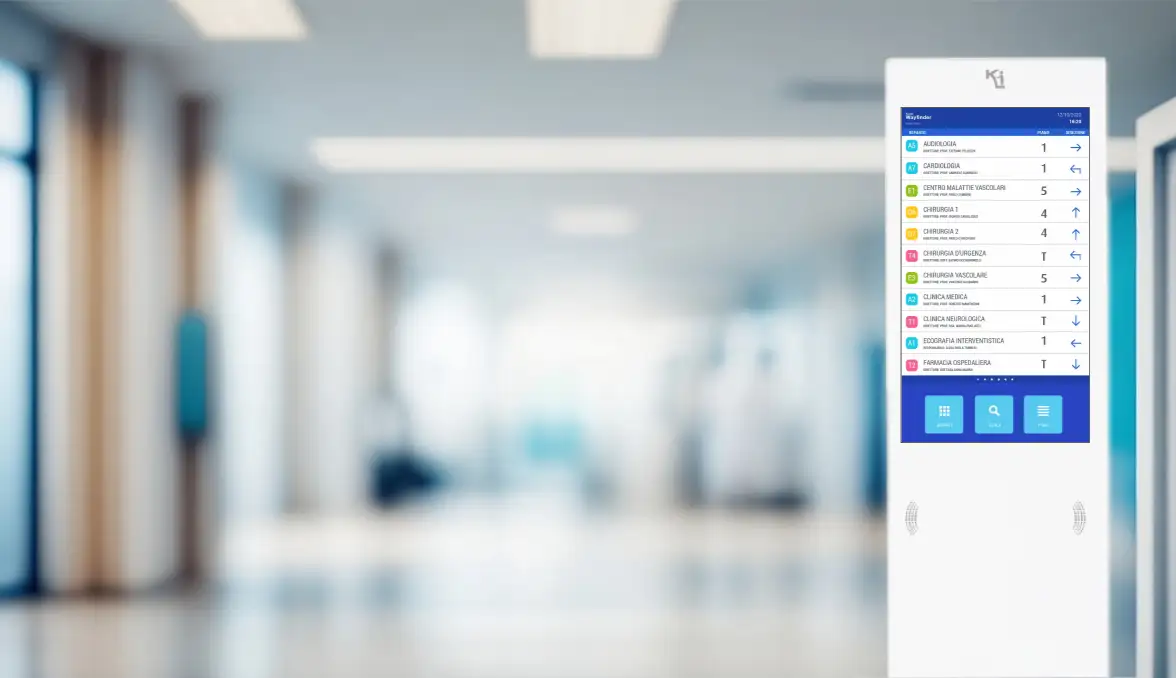
The importance of a Wayfinder orientation system in hospitals
As we anticipated, the need for a digital wayfinding system in hospitals is becoming increasingly evident, both to provide clear information to patients, but also to guarantee rapid updates to the benefit of the overall efficiency of the hospital structure.
The advantages are numerous and vary from structure to structure; however we can highlight the following points for reflection.
1. Clear directions for a better patient experience
The first and fundamental benefit of digital wayfinding is the clarity of the information provided to patients. By eliminating the uncertainty that comes with traditional signage, patients can navigate the hospital with greater confidence, reducing their stress levels and improving their overall experience.
2. Real-time updateability to respond to organizational changes
2. Real-time updateability to respond to organizational changes With digital signage, these updates can be implemented in real time, ensuring information is always accurate and up to date. This not only makes patients’ lives easier but also reduces the risk of errors due to outdated information.
3. Operational efficiency and reduction of outages
Adopting a digital wayfinding system not only benefits patients but also improves the operational efficiency of hospital staff. Reducing repeated questions and interruptions allows staff to focus on their tasks, improving overall workflow and quality of care.
4. Personalization of the user experience
Another key benefit of digital wayfinding is the ability to personalize the user experience. Patients can receive specific indications based on their needs, such as routes optimized for reduced mobility or personalized information on their treatment path.
5. Security and compliance
Safety is a top priority in a hospital environment. A digital wayfinding system can help ensure patient safety by clearly indicating emergency exits and providing detailed instructions in the event of an evacuation.
In conclusion, the adoption of digital wayfinding in hospitals represents a milestone in transforming the patient experience and optimizing hospital operations.
From clear guidance and real-time updates to greater operational efficiency, this innovation results in a safer, more welcoming and patient-focused hospital environment.
Navigation thus becomes a technology-driven path, significantly improving the entire hospital ecosystem.
What a wayfinder looks like on a multimedia totem or digital display
A wayfinder on a multimedia totem or digital display immediately catches the eye due to its beauty, attractiveness and appeal to use.
The totem, often strategically positioned in key areas, is equipped with a digital screen that displays interactive maps, detailed directions and useful navigation information.
Users can interact directly with the touchscreen, whether on a totem or display, select their desired destination and receive clear and updated instructions in real time.
The aesthetic appearance of the wayfinder is often designed to integrate harmoniously with the surrounding environment. Among the elements that identify and characterize it, we have:
Intuitive user interface
Totems or digital displays have an intuitive user interface, often touch screen, that allows users to interact directly with the system. This interactivity makes a digital wayfinding system more engaging and personalized.
Interactive Maps
Digital displays display interactive maps of the environment, broken down into clear, easily understandable sections. Users can virtually explore the space, locate their starting point and select their desired destination.
Detailed directions
Once the user has selected the destination, the system provides detailed directions on the route to follow. These indications may include information on distance, landmarks along the route and any recent changes in the organization of the spaces.
Real-time update
One of the key features of this type of digital signage is its ability to update in real-time. Any changes in the layout of the spaces, such as the change of location of a department or the name of the Department Head, are immediately integrated into the system, ensuring that the information is always accurate.
Experience personalization
Some systems allow users to personalize their experience. For example, they can select routes optimized based on their specific needs, such as limited mobility or preference for stairs or elevators.
Integration with other services
In some cases, digital kiosks can be integrated with other services, such as booking appointments or displaying specific medical information. This creates a more complete ecosystem for users.
Multilingual directions
The presence of multilingual indications in a wayfinder system proves to be a crucial advantage in the hospital environment, where linguistic diversity is the norm. The ability to provide clear directions in multiple languages ensures that every individual, regardless of their native language, can easily understand and follow directions. A wayfinding system thus becomes a fundamental element in guaranteeing a universal and accessible orientation and travel experience for all.
In summary, a modern digital signage system revolutionizes the way people move and interact with physical spaces.
The Wayfinder is an innovative solution that offers a more efficient, personalized and dynamic orientation experience within complex environments such as hospitals, with departments located on multiple floors, and in buildings that are often separate but at the same time connected.
The ease of consultation and their appropriate location makes these tools not only powerful but also necessary; for this reason they are highly appreciated by the heterogeneous target of hospital patients.
Revamp the patient experience with Kiosk Wayfinding
Among the various orientation and signage systems between the various floors and corridors in hospitals, the Kiosk Wayfinder digital solution stands out.
The Kiosk Wayfinder solution allows you to create a more welcoming hospital environment, simplify the patient journey and reduce disruption to your valuable staff.
Kiosk Wayfinder not only solves current challenges but also adapts to the changing dynamics of the hospital organization.
